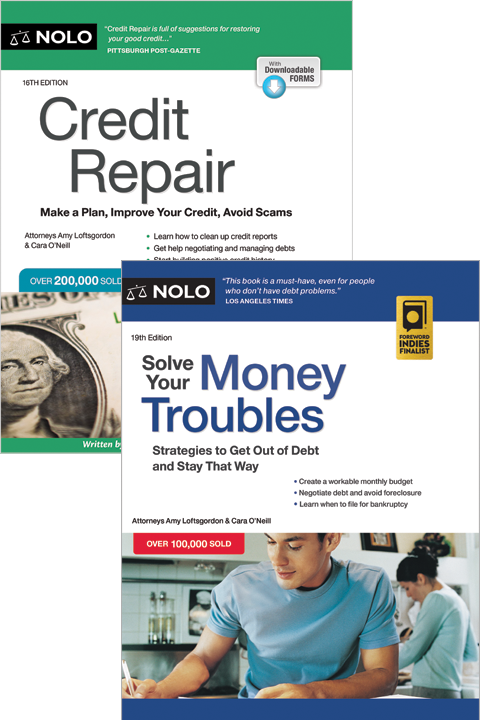Learn why bank accounts get frozen, what steps you can take to unfreeze your account, and how to protect your money.
If you have a frozen bank account, you won't be able to make outgoing payments, transfer funds, or access your funds. Banks freeze thousands of accounts every year, often with little warning.
Finding out that a bank account is suddenly frozen can be shocking and frustrating. But you can protect yourself and you have rights. In this article, you'll learn the most common reasons accounts are frozen, what rights you have, and how you can fix or prevent the problem of a frozen bank account.
- What Is a Frozen Bank Account?
- Why Was My Bank Account Frozen?
- Does a Judgment Creditor Have to Notify Me Before Freezing My Account?
- Does My Bank Have to Notify Me Before Freezing My Account?
- How Do You Know If Your Bank Account Is Frozen?
- Can I Still Use My Bank Account If It's Frozen?
- How to Unfreeze Your Bank Account
- How to Prevent a Bank Account Freeze
- Getting Help With a Frozen Bank Account
What Is a Frozen Bank Account?
If you have overdue debts, your creditors might take steps to collect directly from your bank by freezing your account. A freeze that a creditor places on your account is also referred to as a bank account "levy," "attachment," or "garnishment."
When an account is frozen, you can't withdraw money, outstanding checks won't clear, you can't use your ATM or debit card, and you can't make transfers or electronic payments. You might also be responsible for bank charges, like fees for having non-sufficient funds (NSF) in your account.
Why Was My Bank Account Frozen?
Generally, a bank account is frozen because you owe someone money. So, your account could be frozen, and your money paid to a creditor if you have unpaid judgments against you or you owe taxes, federal student loans, or child support.
Most creditors must file a lawsuit and get a judgment against you before freezing your bank account. If the creditor wins the suit, the court issues a money judgment to the creditor. This money judgment serves as proof of the amount owed. Once a creditor has the judgment against you, if you haven't taken steps to pay the judgment or agreed to a payment plan, the judgment creditor can request that the court issue an order that directs your bank to freeze your account. These orders are often called "garnishments" or "attachments." The creditor might also take other steps, such as placing a lien on your home.
However, not all creditors need to get a money judgment before freezing your account. Federal agencies, like the Internal Revenue Service (IRS) and the U.S. Department of Education, don't have to go to court first. Instead, they can garnish or levy without a judgment after giving you notice of the intent to garnish or levy. Other federal and state authorities can also issue their own attachment documents and send them to your bank to freeze your accounts for unpaid obligations, such as child support.
Does a Judgment Creditor Have to Notify Me Before Freezing My Account?
It's unlikely that you'll receive any advance notice about a frozen account from a judgment creditor. But, again, most creditors can't freeze your account without getting a judgment against you after filing a lawsuit. And the creditor must give you notice of the suit.
However, if you have a loan from the same bank as your account, the lender can take money from your account without filing a lawsuit or getting a judgment. The legal term for this process is a "bank setoff."
Does My Bank Have to Notify Me Before Freezing My Account?
Your bank has to tell you when it gets notice to freeze your account. But the account will most likely be inaccessible by the time you learn about the freeze.
How Do You Know If Your Bank Account Is Frozen?
Again, while your bank account funds are frozen:
- you won't have access to the money
- you can't make transfers or electronic payments
- you won't be able to use your ATM or debit card, and
- checks that you wrote before your funds were frozen won't clear.
Basically, any transaction that you attempt won't go through.
Again, your bank should send you a notice that the account is frozen. But remember, even though the bank must notify you of an order to freeze your account, it will comply with the order before letting you know. So, your account will be frozen when you learn about it.
Can I Still Use My Bank Account If It's Frozen?
You can probably still make deposits even after your bank account is frozen. But you could be risking that the new deposits will also be frozen. If the bank accepts the deposit, that money might be frozen along with the other funds in the account. So, if your account is frozen, you'll need to stop direct deposits to ensure you still have access to your money.
How to Unfreeze Your Bank Account
The notice you receive from the bank should set out your rights to object to the freeze and might identify exemptions that would allow the funds to be released to you. The notice should provide the deadlines for you to object to or challenge the attachment. It will also identify the creditor and the case in which the attachment has been issued.
In most cases, you'll need to file papers with the court telling the judge why you believe the attachment is inappropriate to challenge it.
How to Prevent a Bank Account Freeze
You can take steps to avoid having your bank accounts frozen or to make it easier to have the funds released if they are frozen, like not ignoring debt collectors, having your government assistance funds directly deposited, and not transferring Social Security funds to a different account.
Don't Ignore Debt Collectors
To avoid having a creditor levy your bank accounts, pay your debts. If you have a debt you don't have enough money to pay, arrange a payment plan to give yourself more time. Most state and federal taxing authorities will work with you on this, as will many creditors. (You might also consider filing for bankruptcy if you have a lot of debts.)
Again, while most creditors must get a judgment against you before they can have your accounts frozen, some don't. These include government agencies that collect federal and state taxes, as well as child support and federal student loans.
Have Government Assistance Funds Direct Deposited
If a bank receives an order of attachment, it must review the account to determine if direct deposits into the accounts include certain government assistance income, such as Social Security and veterans' benefits. These benefits are generally exempt from the freeze. Other benefits covered by this rule include:
- Supplemental Security Income
- federal railroad retirement, unemployment and sickness
- Civil Service Retirement System, and
- Federal Employee Retirement System.
If these funds are directly deposited, the bank is prohibited from freezing the last two months of the government assistance deposits. This rule doesn't apply to funds deposited by check. If you receive the same assistance as a check you deposit into the account, the account can be frozen until you claim and prove your right to have the funds released.
The bottom line: Switch all government assistance payments to direct deposit.
Don't Transfer Your Social Security Funds to Different Accounts
Social Security income gets special protections, especially if you have the money direct deposited into your account, but even if you do not. Social Security funds retain their protections even after they're received. However, the burden is on you to prove the source of the funds.
If you move your Social Security income to different accounts after you receive it or mix it with other money, it might be more difficult to prove that the source of the deposits was Social Security income.
Know Your State's Exemptions and Use Non-Exempt Funds First
Each state's laws provide for certain property or income creditors can't take to satisfy unpaid debts. You should become familiar with the exemptions in your state to protect your property before you have a problem, and make sure that you use your non-exempt or unprotected deposits to pay bills before you deplete the protected deposits.
Keep Separate Accounts for Exempt Funds, Don't Commingle Them with Non-Exempt Funds
If you keep a separate account for funds that you know qualify for a specific exemption from attachment, if an attachment occurs, it might be easier and quicker to have the account released to you if you can show that the account only contains funds that qualify for an exemption. If the funds are commingled or mixed with money that isn't exempt, you'll have to trace the deposits to prove to the court that the balance which was actually frozen came from the exempt funds, a more complex process that will take more time.
For example, if your state protects wages for the head of household, it would be a good idea to set up a wage account and have all of the head of household's wages directly deposited into this account. If a creditor obtains an attachment order, you can easily show that the only money in the account came from the head of household's wages and have the funds quickly released.
Don't Keep Your Account in a Bank That You Owe Money To
If you owe money to the bank that holds your savings or checking accounts and fall behind on your payments, the bank has the right to set off the funds in your account against the debt. As long as you owe the money to the same bank that holds your accounts, it doesn't need to get a judgment or court order to do this.
It's generally a good idea to keep your deposit accounts in a bank you don't have a lending relationship with. While it's common to maintain your business bank accounts at a bank that provides you with business loans or lines of credit, you don't need to keep your personal accounts there. This way, if the business fails, you're less likely to have your personal funds taken to satisfy personal guarantees you might have given on the business loans.
Getting Help With a Frozen Bank Account
If your bank account if frozen, your first step is to contact your bank's customer service department or a local branch to find out the reason for the freeze and what you need to do to resolve it. Ask the bank to lift the freeze if the account has funds exempt from garnishment under federal law. You can also ask the bank to waive or refund NSF fees that resulted from the freeze. If the bank doesn't release exempt funds, you'll most likely have to go to court to get access to them.
If you need further assistance or guidance, consider talking to a lawyer in your state to learn about laws that might help protect your money and assets from creditors.
- What Is a Frozen Bank Account?
- Why Was My Bank Account Frozen?
- Does a Judgment Creditor Have to Notify Me Before Freezing My Account?
- Does My Bank Have to Notify Me Before Freezing My Account?
- How Do You Know If Your Bank Account Is Frozen?
- Can I Still Use My Bank Account If It's Frozen?
- How to Unfreeze Your Bank Account
- How to Prevent a Bank Account Freeze
- Getting Help With a Frozen Bank Account



